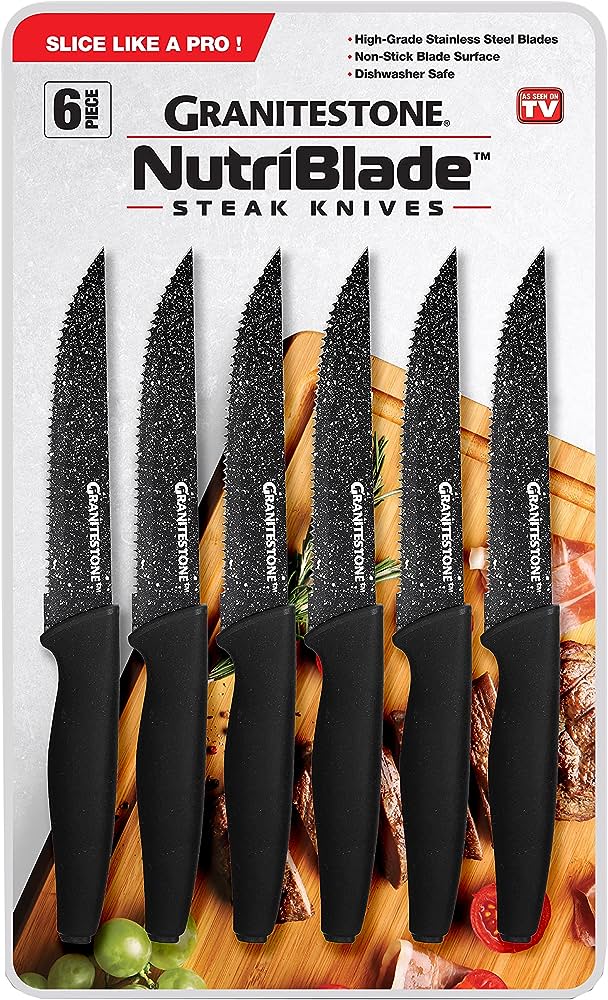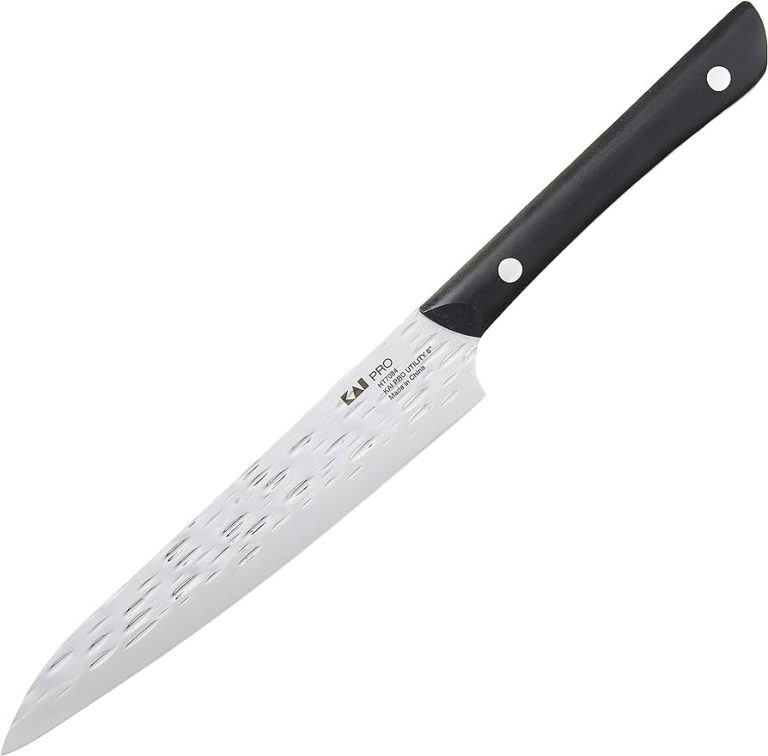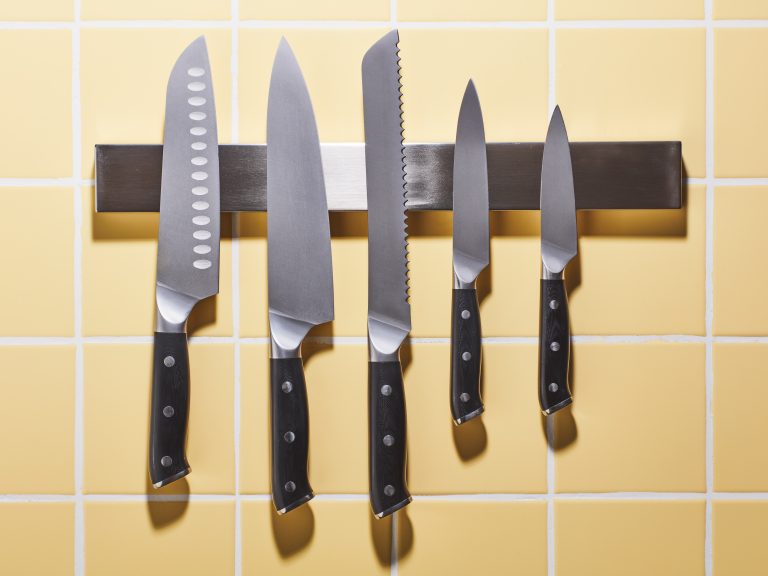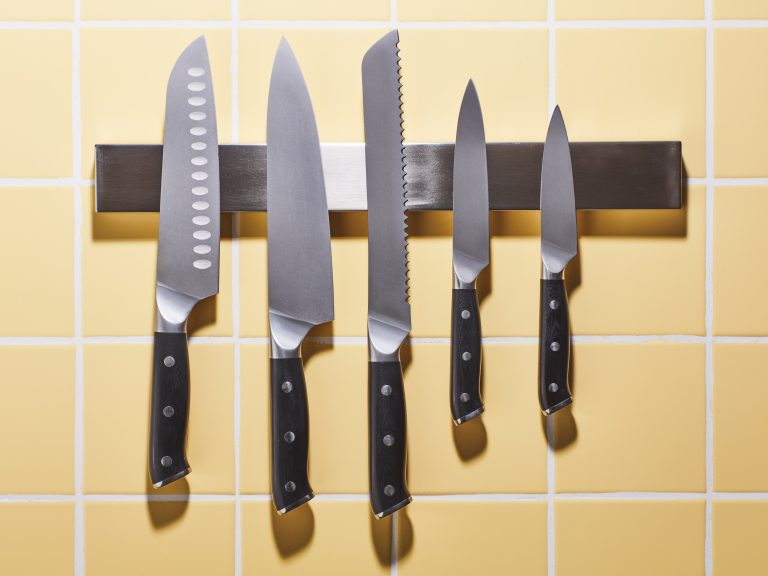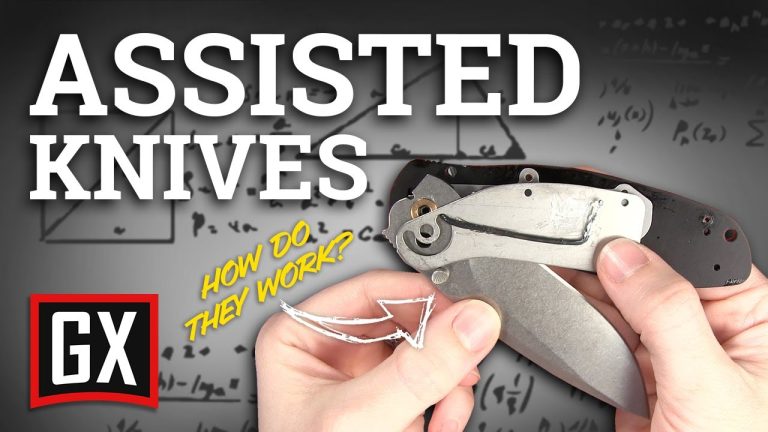What Knife Do Navy Seals Use?
Navy SEALs use the Ontario MK 3 Navy Knife, which is a versatile and durable combat knife. This knife is specifically designed for underwater operations and features a partially serrated edge for cutting through various materials, such as ropes and webbing.
It is corrosion-resistant and easy to handle, making it the preferred choice for Navy SEALs during their missions. With its reputation for reliability, the Ontario MK 3 Navy Knife has become a staple tool in the arsenal of these elite special forces operatives.
**1. A Brief History Of Naval Special Warfare**
Navy SEALs make use of a versatile and durable knife known as the SOG SEAL Team Elite. This knife has a rich history in naval special warfare and is favored for its reliability and performance in various tactical situations.
The Inception Of Navy Seals
- The Navy SEALs are the elite special operations force of the United States Navy, known for their exceptional combat and naval warfare expertise.
- The origins of the Navy SEALs can be traced back to the establishment of the Navy Combat Demolition Units (NCDUs) during World War II.
- These NCDUs played a crucial role in supporting amphibious and landing operations by clearing obstacles, demolishing enemy installations, and ensuring the safe passage of troops.
- The success of these units led to the creation of specialized underwater demolition teams, which later evolved into the modern-day Navy SEALs.
Covert Operations During World War Ii
- During World War II, Navy frogmen were extensively trained for covert and clandestine operations.
- These frogmen were primarily responsible for conducting reconnaissance, gathering intelligence, and sabotaging enemy ships and infrastructure.
- As the war progressed, their missions expanded to include beach reconnaissance, underwater demolition, and raiding enemy-held coastal areas.
- The daring exploits of these frogmen laid the foundation for the development of Navy special operations units like the SEALs.
Evolution And Expansion Of Navy Special Operations Units
- After World War II, the Navy recognized the need for a dedicated special warfare capability and established the Underwater Demolition Teams (UDTs).
- The UDTs underwent further development and training, incorporating various aspects of sea, air, and land operations.
- In the 1960s, the UDTs merged with the SEAL Delivery Vehicle Teams and became known as SEAL Teams.
- Over the years, Navy special operations units expanded their capabilities and became more versatile, engaging in counterterrorism, special reconnaissance, direct action, and unconventional warfare.
The Importance Of Specialized Equipment
- Navy SEALs are equipped with the latest cutting-edge technology and specialized gear to enhance their operational capabilities.
- The SEALs rely on a variety of weapons, including assault rifles, sniper rifles, machine guns, and explosives, allowing them to adapt to different mission requirements.
- Their equipment also includes specialized diving gear, such as underwater breathing apparatus and dry suits, to execute covert underwater operations with precision.
- The significance of specialized equipment cannot be overstated, as it enables the SEALs to succeed in the most challenging and high-risk environments.
The Navy SEALs have a rich history that dates back to the World War II-era Navy frogmen. These skilled operatives underwent significant advancements and expansions, ultimately transforming into the highly specialized and adaptable force we know today. With their emphasis on covert operations and the utilization of cutting-edge technology, Navy SEALs continue to play a crucial role in safeguarding national security.
**2. The Importance Of A Proper Combat Knife For Navy Seals**
A proper combat knife plays a crucial role for Navy SEALs, enhancing their effectiveness in tactical operations and survival situations. The knife preferred by Navy SEALs is designed to be durable, versatile, and easily maneuverable, aiding them in their mission success.
2. The Importance Of A Proper Combat Knife For Navy Seals
**Essential tool for survival and self-defense:**
- A combat knife is an indispensable tool for Navy SEALs, serving as a vital asset for survival and self-defense in their highly challenging missions.
- The versatility and effectiveness of a combat knife make it a primary weapon for close-quarters combat situations, where firearms may not be practical or available.
**Versatility in different operational environments:**
- Navy SEALs operate in diverse environments, including jungles, deserts, mountains, and maritime settings. A proper combat knife offers the versatility necessary to tackle various situations encountered in these operational environments.
- From cutting through dense vegetation to prying open doors, a reliable combat knife can assist SEALs in performing essential tactical tasks swiftly and efficiently.
**Factors considered when selecting a combat knife:**
- The selection of a combat knife entails careful consideration of several factors, ensuring it meets the specialized needs of Navy SEALs. These factors include:
- Blade design: A blade with a combination of tanto, drop point, or clip point offers versatility in cutting, slicing, and stabbing motions.
- Blade material: High-quality stainless steel or carbon steel blades provide durability and corrosion resistance in challenging environments.
- Blade length: A balance between a compact size for concealment and a longer blade for combat effectiveness is crucial.
- Handle ergonomics: The handle should offer a secure grip, even in wet conditions or when wearing gloves.
- Tang construction: Full tang knives, where the blade extends through the entire handle, provide superior strength and balance.
- Sheath compatibility: A compatible sheath ensures easy and secure storage, quick deployment, and safe retention of the knife.
A proper combat knife is an essential tool for Navy SEALs, serving as a valuable asset for survival, self-defense, and tactical operations. Its versatility in various environments and the careful consideration of factors such as blade design, material, length, handle ergonomics, tang construction, and sheath compatibility contribute to its effectiveness in the hands of these elite warriors.
**3. Characteristics And Features Of The Navy Seals Knife**
The Navy SEALs Knife is known for its exceptional characteristics and features, making it the preferred choice for these elite forces. With its durable construction, razor-sharp blade, and versatile design, this knife is a reliable tool in demanding situations.
Blade Design And Materials:
- The Navy SEALs knife boasts a design that prioritizes versatility and durability. The blade is typically crafted from high-quality stainless steel.
- A partially serrated edge allows for a variety of cutting tasks, making it suitable for tactical and survival situations.
- The black coating on the blade not only reduces glare but also enhances corrosion resistance, crucial for enduring harsh environments.
- The tip of the blade is engineered to be strong and sharp, enabling the user to puncture and penetrate efficiently during operations.
Length And Weight Considerations:
- The Navy SEALs knife is designed with the ideal length and weight to ensure optimal versatility and ease of use.
- It typically features a blade length between 4 and 7 inches, allowing for precise cutting and slicing while maintaining control.
- The weight usually ranges from 6 to 9 ounces, striking a balance between being lightweight enough for easy handling and heavy enough to provide force and stability.
Handle And Grip Features:
- The handle of the Navy SEALs knife is ergonomically designed to provide a secure and comfortable grip during intense missions.
- Made from durable materials such as synthetic polymers or reinforced fiberglass, the handle is resistant to various weather conditions and physical stress.
- The textured pattern on the handle offers enhanced grip, ensuring a firm hold even when wet or oily.
- Some models may include finger grooves or a guard for additional hand protection and reduced slippage.
Additional Functionalities And Accessories:
- Navy SEALs knives often come equipped with additional functionalities and accessories to enhance their utility.
- Some models feature a pommel or butt end that can be used for various tasks such as breaking glass or striking objects.
- Many knives include a sturdy sheath made of durable materials with multiple carrying options like belt loops or MOLLE attachments.
- Some knives may have integrated systems for attaching accessories like fire starters, sharpeners, or small tools to expand functionality.
- Specialized versions may have unique features like integrated oxygen tank wrenches or wire cutters to assist in specific scenarios.
Remember, the Navy SEALs knife is carefully designed and selected to meet the demanding needs of the Navy SEALs, guaranteeing reliability and performance in high-stakes situations. Whether it’s the blade, length, weight, handle, or additional functionalities, every aspect of these knives is meticulously crafted to ensure they serve their purpose efficiently and effectively.
**4. Commonly Used Combat Knives By Navy Seals**
Navy SEALs rely on a variety of combat knives for their missions, including the SOG SEAL Pup Elite and the Benchmade Nimravus. These knives are designed for durability, versatility, and reliable performance in the field.
4. Commonly Used Combat Knives By Navy Seals
When it comes to combat knives, Navy SEALs rely on a range of high-quality blades that are designed to withstand the rigors of their demanding missions. These knives are not only sharp and durable, but they are also lightweight and versatile, allowing the SEALs to perform their tasks efficiently.
In this section, we will explore four commonly used combat knives by Navy SEALs: the KA-BAR USMC Fighting Knife, Ontario MK 3 Navy Knife, SOG SEAL Pup Elite Knife, and the Benchmade Nimravus Knife.
Ka-Bar Usmc Fighting Knife
- One of the most iconic combat knives used by Navy SEALs is the KA-BAR USMC Fighting Knife.
- Its 7-inch blade is made from high-quality stainless steel, ensuring durability and excellent edge retention.
- The blade features a clip point design, making it suitable for a variety of tasks such as cutting, slicing, and piercing.
- The knife has a full tang construction, providing strength and stability.
- It also boasts a comfortable and slip-resistant handle, allowing for a secure grip even in wet conditions.
- With its proven track record and outstanding performance, the KA-BAR USMC Fighting Knife is a trusted companion for Navy SEALs in the field.
Ontario Mk 3 Navy Knife
- Another popular choice among Navy SEALs is the Ontario MK 3 Navy Knife.
- This knife features a 6-inch stainless steel blade with a partially serrated edge, enabling it to handle both cutting and sawing tasks efficiently.
- Its compact size makes it easy to carry and maneuver in tight spaces.
- The Ontario MK 3 Navy Knife has a molded handle with a textured grip, ensuring a secure and comfortable hold.
- It is also equipped with a butt cap, which can be used as a glass breaker or a striking tool when necessary.
- Known for its reliability and versatility, the Ontario MK 3 Navy Knife is a trusted companion for Navy SEALs in various combat situations.
Sog Seal Pup Elite Knife
- The SOG SEAL Pup Elite Knife is a lightweight and compact option that is favored by Navy SEALs.
- Its 4.85-inch blade is made from high-quality stainless steel, providing excellent corrosion resistance and edge retention.
- The blade features a tanto point design, making it ideal for piercing and penetrating tough materials.
- With its durable glass-reinforced nylon handle, the SOG SEAL Pup Elite Knife offers a comfortable and secure grip even in wet conditions.
- This knife also comes with a versatile MOLLE-compatible sheath, allowing for easy attachment to gear and equipment.
- Whether it’s for combat or survival purposes, the SOG SEAL Pup Elite Knife proves to be a reliable choice for Navy SEALs.
Benchmade Nimravus Knife
- The Benchmade Nimravus Knife is a modern tactical knife that meets the high standards of Navy SEALs.
- Its 4.5-inch tanto blade is crafted from high-quality stainless steel, ensuring excellent strength and edge retention.
- The blade features a partially serrated edge, allowing for versatile cutting options.
- The Benchmade Nimravus Knife features a robust handle made from aircraft-grade aluminum, providing durability and stability.
- Its textured handle offers a secure grip, even in challenging conditions.
- With its versatile design and exceptional performance, the Benchmade Nimravus Knife is trusted by Navy SEALs for a wide range of combat operations.
Navy SEALs choose their combat knives based on reliability, durability, and versatility. The KA-BAR USMC Fighting Knife, Ontario MK 3 Navy Knife, SOG SEAL Pup Elite Knife, and Benchmade Nimravus Knife are just a few examples of the high-quality blades that these elite warriors rely on when facing the challenges of their missions.
**5. The Role Of Knife Training In Seals’ Operational Readiness**
Knife training plays a crucial role in enhancing the operational readiness of SEALs. Learn more about the knives used by Navy SEALs and the importance of their training.
5. The Role Of Knife Training In Seals’ Operational Readiness
Knife training plays a crucial role in ensuring the operational readiness of Navy SEALs. Let’s explore the importance of proper knife handling skills, the training methodologies and techniques employed, as well as the integration of knife skills in combatives and survival training.
Importance Of Proper Knife Handling Skills:
- Proficiency with knives is essential for Navy SEALs to effectively complete various missions and tasks.
- A well-trained SEAL knows how to handle a knife safely, minimizing the risk of accidents and injuries.
- Proper knife handling skills enable SEALs to swiftly and efficiently perform tasks involving cutting, slashing, and piercing.
- By mastering these skills, SEALs increase their effectiveness in close-quarters combat situations.
Training Methodologies And Techniques:
- Navy SEALs undergo rigorous training programs specifically designed to develop their knife skills.
- These programs include both classroom instruction and practical hands-on training.
- SEALs learn about the different types of knives and their specific uses.
- Techniques such as grip, stance, and target selection are taught and practiced extensively.
- Training scenarios simulate real-life combat situations, allowing SEALs to apply their skills under pressure.
Integration Of Knife Skills In Combatives And Survival Training:
- SEALs receive comprehensive combatives training, which includes the integration of knife skills.
- Knife techniques are taught as part of unarmed combat techniques, enabling SEALs to seamlessly transition between different forms of combat.
- In survival training, SEALs learn how to use knives for hunting, food preparation, and creating shelter.
- These skills are essential for their ability to operate in remote and hostile environments.
- The integration of knife skills in combatives and survival training ensures that SEALs are well-rounded and fully equipped for any situation.
Knife training holds immense significance in the world of Navy SEALs. By honing their knife handling skills, adopting effective training methodologies, and integrating knife techniques into combatives and survival training, SEALs enhance their operational readiness, making them a formidable force in any mission they undertake.
**6. Maintaining And Caring For A Seals Combat Knife**
The SEALs combat knife used by Navy SEALs requires proper maintenance and care to ensure its longevity and effectiveness in the field. Regular cleaning, sharpening, and oiling are essential to keep the knife in optimal condition for combat situations.
Regular Cleaning And Maintenance Procedures
Keeping a SEALs combat knife clean and well-maintained is crucial for its effectiveness in the field. Here are some regular cleaning and maintenance procedures to ensure the longevity and optimal performance of your knife:
- Wipe down the blade and handle with a clean, dry cloth after each use to remove any dirt or debris.
- If the knife gets wet, dry it thoroughly to prevent rust formation.
- Regularly inspect the knife for signs of wear, such as loose screws or dull edges.
- Use a mild dish soap and warm water to clean the blade and handle. Avoid harsh chemicals that can damage the knife’s finish.
- After cleaning, ensure all parts are completely dry before reassembling the knife.
- Apply a thin coat of oil to the blade to protect it from rust. Be sure to use oil specifically designed for knife maintenance.
Proper Storage Techniques
Proper storage of the SEALs combat knife is essential to maintain its functionality and longevity. Follow these techniques to keep your knife safe and in optimal condition:
- Store the knife in a dry and cool environment to prevent moisture buildup.
- Avoid storing the knife in sheaths for extended periods, as moisture can accumulate and lead to corrosion.
- Make use of protective blade covers or knife rolls when transporting the knife.
- Store the knife in a secure location out of reach from children or unauthorized individuals.
- Regularly check the storage area for any signs of rust or damage.
Sharpening And Honing Tips
Maintaining a sharp edge is vital for a SEALs combat knife. Sharpening and honing the blade regularly will ensure its effectiveness. Here are some tips for sharpening and honing the knife:
- Use a sharpening stone or a diamond-coated sharpening tool to restore the knife’s edge.
- Hold the knife at a consistent angle while sharpening, typically between 15 to 20 degrees.
- Move the blade along the sharpening surface in a smooth and controlled motion.
- Test the sharpness of the knife by lightly running your thumb along the blade (carefully!). A dull blade will feel rough, while a sharp blade will glide smoothly.
- To hone the blade, use a honing rod to realign the knife’s edge. This helps maintain the sharpness between sharpenings.
- Take caution when sharpening and honing to avoid accidents and injury.
By following these regular cleaning and maintenance procedures, proper storage techniques, and sharpening and honing tips, you can ensure that your SEALs combat knife remains in top condition, ready for any situation.
**7. Implementing Lessons From The Seals In Your Personal Gear Selection**
Discover the best knife for your personal gear selection by implementing valuable lessons from the Navy SEALs. Equip yourself with the same knife trusted by these elite forces for top performance and reliability.
Factors To Consider When Selecting A Personal Combat Knife
- Purpose: Determine the primary use for the knife, such as self-defense, survival, or general utility. This will help you narrow down your options and choose a knife that best suits your needs.
- Size and weight: Consider the size and weight of the knife, as this can affect ease of handling and portability. A balance between functionality and comfort is key.
- Blade length and shape: Different blade lengths and shapes have their own advantages. A shorter blade may be more maneuverable in close quarters, while a longer blade offers more reach. Consider the specific situations you may encounter and choose accordingly.
- Handle design and ergonomics: Look for a handle that provides a secure grip and feels comfortable in your hand. Some handles feature textured patterns or ergonomic shapes to enhance traction and reduce fatigue during prolonged use.
- Quality and durability: Opt for a knife made from high-quality materials that can withstand the rigors of combat. Consider factors such as blade hardness, corrosion resistance, and handle construction.
- Maintenance and ease of sharpening: A knife that is easy to maintain and sharpen is crucial. Look for materials that retain their edge for extended periods and consider the availability of sharpening tools or services.
- Legal considerations: Understand and abide by any local laws and regulations regarding the possession and carry of knives. Ensure that the knife you choose is legal for your intended use.
Choosing The Right Blade Material And Design
- Blade materials: Different blade materials offer various properties in terms of strength, sharpness retention, and corrosion resistance. Common options include stainless steel, carbon steel, and high-carbon stainless steel. Research the pros and cons of each material before making a decision.
- Blade coatings: Some blades feature coatings to enhance durability and minimize visibility. Coatings like black oxide or DLC (Diamond-Like Carbon) can provide increased corrosion resistance and reduce glare.
- Edge type: Consider the type of edge that suits your needs, such as plain, serrated, or partially serrated. Each has its advantages and is suitable for different applications.
- Blade shape: Blade shapes, such as drop point, tanto, or clip point, offer different capabilities. Evaluate which shape is most suitable for your intended use, be it cutting, piercing, or slicing.
- Deployment method: Choose between manual or assisted opening mechanisms, considering factors like ease of use, reliability, and legality in your region.
Tips For Finding A Reputable Knife Manufacturer
- Research and reviews: Conduct thorough research and read customer reviews to gather information about different knife manufacturers. Look for consistently positive feedback and scrutinize potential drawbacks.
- Brand reputation: Consider reputable brands known for their commitment to quality and reliability. Brands that have a long-standing history of producing military-grade equipment can provide assurance.
- Warranty and customer support: Check if the manufacturer offers a warranty and reliable customer support. A strong warranty reflects the manufacturer’s confidence in their products and their commitment to customer satisfaction.
- Material sources and production standards: Look for manufacturers that are transparent about their material sources and adhere to strict production standards. This ensures the use of high-quality materials and consistent craftsmanship.
- Military and law enforcement endorsements: Consider manufacturers that have earned endorsements from military or law enforcement agencies. This indicates their knives have been tested and trusted in real-world scenarios.
By considering these factors when selecting a personal combat knife and following these tips for finding a reputable manufacturer, you can ensure that your gear aligns with the lessons learned from the Navy SEALs. Remember, choosing the right knife is not just about acquiring a tool, but also about enhancing your personal safety and preparedness in critical situations.

Credit: www.youtube.com
Frequently Asked Questions On What Knife Do Navy Seals Use?
What Knife Do Navy Seals Get?
Navy SEALs are equipped with the SOG SEAL Knife, a reliable and versatile choice.
What Knives Do Green Berets Carry?
Green Berets carry a variety of knives for different missions and situations.
What Knife Does The Cia Use?
The CIA uses multiple types of knives, including those approved for field operatives.
Do Navy Seals Use Sog?
Yes, Navy SEALs use SOG for their special operations missions.
Conclusion
The knife used by Navy SEALs is a crucial tool that plays a vital role in their effectiveness and survival on the field. The SEALs rely on the durability and versatility provided by their knife to tackle any situation they encounter.
The use of high-quality materials, such as stainless steel and titanium, ensures their knives can withstand the toughest conditions. The tactical features, like serrated edges and non-reflective coatings, make them effective for a range of tasks, from cutting ropes to self-defense.
However, it’s important to note that the knife alone does not determine the success of a Navy SEAL operation. It is the combination of well-trained individuals, strategic planning, and teamwork that allows the SEALs to execute their missions with utmost precision.
So, while the knife is indeed a critical tool in their arsenal, it is just one piece of the puzzle that makes Navy SEALs the elite force they are known to be.

